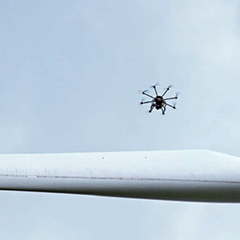by Morgan Troedsson, Product Manager, FORCE Technology
The long-term efficiency of wind power relies on periodic revisions, with recurring inspection and maintenance. Morgan Troedsson, Product Manager at FORCE Technology, talks about what they bring to this vital subject on system reliability.
Offshore turbines
Wind turbines erected offshore were initially not designed for the offshore environment. Tough lessons were learnt from the early installations, e.g. in the Nordic Sea. Anything that could fail, failed. The external ladders and access platforms on turbine towers were basically flushed away, as heavy waves hit and climbed along the tower base.
The environmental impact on the whole turbine structure was much higher than expected. Gearbox failures were common. Heat dissipation, electronics cooling, as well as nacelle venting, was not as easy as expected. The internal cooling system was in most cases not functional. Corrosion effects inside the nacelle and on foundations became visible, and required specific designs for offshore wind turbines.
Rotor blades were subjected to heavy and unpredictable environmental load. Surface gel coatings were basically not sufficiently resistant to the harsh offshore weather conditions. Leading edges of rotor blades started to erode much earlier than expected. The erosion rate was quite high. Lessons learnt were that offshore rotor blades require professional refurbishment after only three to five years in continuous operation. In comparison, onshore blade refurbishment is normally done after eight to twelve years.
Condition testing
It came as an unexpected surprise to anyone in wind power business that offshore wind turbine blades were degraded so early in their life. Wind fatigue load is quite substantial offshore, causing premature damages and cracks to the blade structure itself. Even more obvious is the damaged aerodynamic appearance, with worn coatings and leading edges seriously eroded in only four years on average.
























